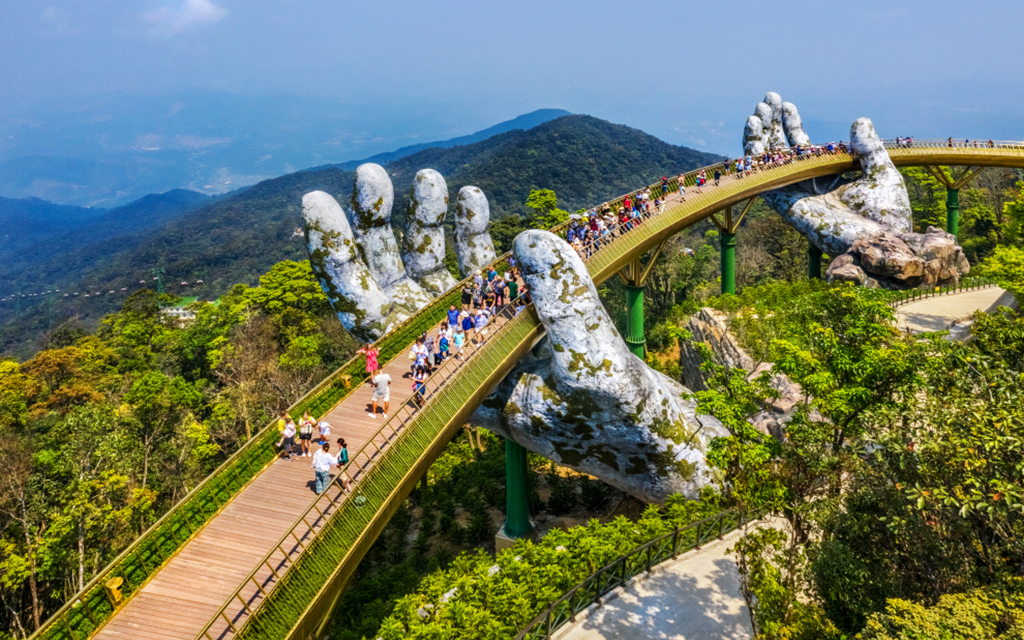You won’t bump your head in the caves of central Vietnam’s Quang Binh province. Not after they’re huge enough to shape a 40-story building. Three of the world’s four most extensive caves are in this skinniest part of the narrow nation. Hundreds of other limestone caves housing deep caverns and underground rivers are here too, with new caverns discovered every yr. They’re welcome news for this location, just north of the demilitarized zone that cut up North and South Vietnam from 1954 until 1975. The US bombed right here appreciably through the Vietnam War (one crater is used as the site of an outside bar), and poverty hit hard for more than a decade afterward.
Now Quang Binh is the world’s warm new caving vacation spot, domestic to a 126,000-hectare Unesco-included countrywide park whose lush tropical forests cover a sizeable 104km subterranean international – making it one of the excellent limestone karst ecosystems on the earth. I these days visited to discover a handful of Vietnam’s amazing caves, along with one that opened to the general public several months in the past. When I lived right here inside the Nineties, I had no idea approximately the place’s hidden labyrinth buried below my ft. I’ve enjoyed caves in the past – to a point. Most of my reports have been in drive-up affairs where claustrophobic tours result in head bumps observed using fudge-stuffed stores. Now, I changed into in search of extra cave majesty.

Most coverage of Quang Binh focuses on the 200m-tall and 5km-lengthy Son Doong cave, the sector’s largest. A nearby logger found it by coincidence in 1991; then, scientists explored it in 2009 before establishing it for tours in 2013. But Son Doong’s constrained to get entry to (1,000 humans a 12 months) and price sixty-nine,766,100 Vietnamese dongs (£2,384 per man or woman) manner most visitors, such as myself, appearance to a number of the province’s hundreds of other regarded caves. Some function clean-access boardwalks and lit-up stalactites and stalagmites. Others are untouched, requiring guided in single-day jungle treks to camping websites at underground cave beaches. Meanwhile, this subterranean environment is growing. ‘New’ caves open to traffic every 12 months.
“We’ve nonetheless simplest explored approximately 30% of the place. So there’s a lot more to find,” stated Howard Limbert of the British Cave Research Association, who first got here to Vietnam in 1990 with his spouse, Deb. They stuck around to discover and helped local operators open caves to the general public, inclusive of Son Doong in 2013. According to Howard, a mixture of 450-million-12 months-vintage limestone deposits and heavy rains in Quang Binh offer the correct combination for cave making. Rainwater receives channeled through more muscular, non-limestone rock, gradually forming underground rivers and enormous chambers that expand for kilometers. In some, you may see ceiling grooves, hundreds of meters above cave floors, crafted from eddies when caves sometimes fill with water all through the autumn monsoon season.
The coronary heart of those natural points of interest is Phong Nha–Ke Bang National Park, a 50-minute force west of the coastal town of Dong Hoi. In the modest village of Phong Nha, dozens of circles of relatives-run guesthouses run along several kilometers of a mountain-sponsored river. Locals experience longboats and use long poles to harvest river grass used as food at fish farms. There aren’t any hotels yet (even though rumors abound). And impressively, locals run almost all organizations.
The closest cave to the village is Phong Nha, reached using visitor boats from the village’s river docks. But I opted to discover others in and across the country-wide park, where a 50km-loop passes caves, botanic gardens, eco trails, or even a zipper line. By bike, I accompanied the old Ho Chi Minh Road (used to transport gadgets and employees in the Vietnam War) from the village into the park. It’s a lovely trip in itself. Tree canopies stoop over each different amidst interlocked inexperienced mountains that neglect a deep valley reduce with the aid of a thin mud-brown river.
I detoured to a somber cave shrine, Hang Tám Cô, committed to Vietnamese foot soldiers who have been trapped here after a US bombing raid in 1972 and subsequently perished in the darkness. At the subsequent prevent, Paradise Cave (Thien Duong), which opened in 2011, a golf cart took me to a paved ramp to hike up thru the timber to a wooden stairway that descends into massive cave chambers that run 32km.
Until then, Hang Tam Co turned into the full breath-taking cave I’d ever visible without difficulty. But it’s the guided excursions to more extraordinary far-off caves that make Quang Binh the sector’s largest caving destination. Two nearby outfitters, Oxalis and Jungle Boss, have remarkable admission to numerous caves, generally geared to the traffic of varying talent levels. I determined in opposition to their overnight trips and went with three one-day tours.


![Discovering the Charm of Post House Inn: A Memorable Stay in the Heart of [Location] 3 Discovering the Charm of Post House Inn: A Memorable Stay in the Heart of [Location]](https://aws.wideinfo.org/getawayline.com/wp-content/uploads/2024/01/23152340/Post-House-Inn-Exterior-768x521-1-75x75.jpg)













![Discovering the Charm of Post House Inn: A Memorable Stay in the Heart of [Location] 17 Discovering the Charm of Post House Inn: A Memorable Stay in the Heart of [Location]](https://aws.wideinfo.org/getawayline.com/wp-content/uploads/2024/01/23152340/Post-House-Inn-Exterior-768x521-1-120x86.jpg)



